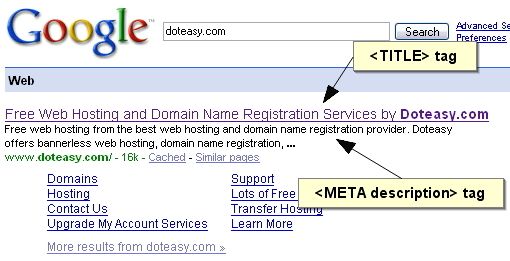If you've ever wanted to rank higher on the search engines, you’ve likely stumbled on many guides on Search Engine Optimization, or SEO.
In general, most of the SEO guides will include a good SEO checklist:
- Links
- Content is King
- Sitemaps
- Keywords in your URL
- H1 instead of H2
And you're probably wondering what about META tags.
Background Info
The META tag was a way to insert text into an HTML page that is only visible to search engines crawlers. Four of the seven major crawlers in the mid-1990s supported the META tag. Unfortunately, the tag was widely abused and many of the early crawlers dropped the tag from their ranking equation. Many people also believe that newer search engines never even considered meta keyword tags in their ranking logarithm.
So, is META tags really not worth the trouble or time anymore?
What Google has to say
As Google is the dominant search engine, we want to see what Google has to say about META tags.
Here are some articles found on the official Google Blog:
- Answer more popular picks: meta tags and web search
- Webmaster tips for creating accessible, crawlable sites
- The anatomy of a search result
So, now we know Google does consider the Title and META description tags.
<meta name=description content=A description of the page>
This tag provides a short description of the page. In some situations the META description is used as a part of the snippet shown in the search results.
For more reading:
- Improve snippets with a meta description makeover
- Meta Descriptions still very important for SEO
- SEO those meta descriptions for more Google Visitors
<title>The title of the page</title>
Although the <Title> tag is not technically a meta tag, it is often used with the description tag. The contents of this tag are generally shown as the title in search results and in the user's browser when visiting the page or viewing bookmarks.
For more reading:
Example:

What about ALT attributes?
ALT tags are alternative information source for images on your website. Not all intended audience see the images on your website: people who have chosen to disable images in their browsers, people using text-to-speech browsers, and search engine crawlers. The Google crawler, or Googlebot, does not see your images but rather it looks at the ALT attribute for a text equivalent of the image to determine what it is about. Thus having an ALT attribute is useful especially for Google Images ranking.
For more reading:
Did you know…
The Doteasy Website Creator supports META tags and the Image Utility in your Doteasy Hosted Blog supports ALT attributes.
Even though META tags and ALT attributes do not play a big part in your search engine ranking, it's always better to have proper tags than no tags at all.
